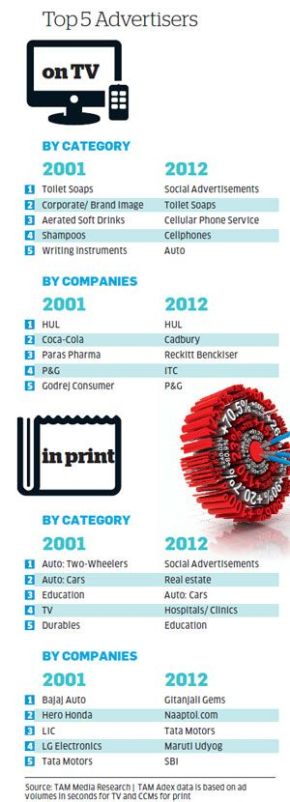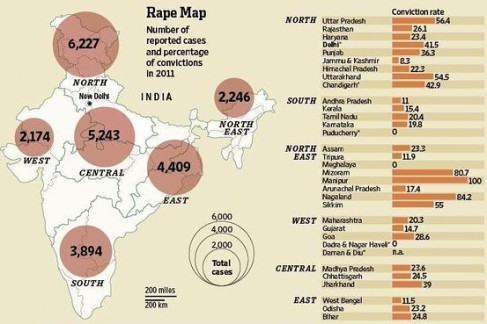On résiste à l’invasion des armées; on ne résiste pas à l’invasion des idées
Thus spake Victor Hugo. Literally translated it means, “One resists the invasion of armies; one does not resist the invasion of ideas”. A more popular and paraphrased version of this is “No one can resist an idea whose time has come”. In one of my earlier posts, I had expressed optimism that with the rise of Narendra Modi on the national stage, the idea of good governance will gain currency and will find itself on the public agenda for deliberation that is in turn likely to eventually increase the demand for good governance.
However, one persistent worry about a country like India where politicians, media & bureaucrats only believe in mouthing platitudes rather than paying serious attention to the issues at hand is that such deliberations about good governance can be easily derailed or hijacked or obfuscated. Only I wasn’t prepared to find that a reasonably educated intellectual with a book to her credit would confuse the discussion around good governance, an idea whose time has certainly come in India. The person in question is Rupa Subramanya, co-author of a book called Indianomix: Making sense of modern India with Vivek Dehejia, a Professor of Economics at Carleton University in Ottawa, Canada. I have seen some of Rupa Subramanya’s Wall Street Journal articles tagged as Rupa Subramanya Dehejia and my safe guess is that the co-author of the Indianomix book is/was her husband. The confused noises made by her are reflected in her tweet which is as below:
The implication of Rupa Subramanya’s tweet is that good governance and levels of corruption have no relation. That is, that even if there is good governance, one can still find high levels of corruption as she claims in her tweet about Tamil Nadu as an example.
Agreed that good governance as a concept is a little fuzzy, but that doesn’t mean that the connotations associated with it are unclear. In the following passages, I have collated the relevant information that clearly point that combating corruption and ensuring low levels of corruption through mechanisms of transparency, accountability, rule of law are important elements that defines good governance right from the time when the term was beginning to be used. It is a shame that authors like Rupa Subramanya display such ignorance when commenting about important topics related to issues of governance and confuse the discussion on this important idea that is beginning to take root in the common man’s consciousness. It is my position that such intellectual sloppiness displayed by an intellectual like her (remember she has a book to her credit that apparently claims to assist in making sense of Modern India) must not be taken lightly, especially on an important topic of how India wants to be governed and that which has taken a good 65 years to come up on the radar of the common man. Hence my response through this blog post which is a little too pedantic even for my own taste. Anyway, I hope that the following pedantic notes should leave no one in any doubt as to the anti corruption essence of good governance, much less this person from Twitter who was obviously confused with the utterances of Rupa Subramanya.
Anti corruption and related mechanisms are necessary elements of Good Governance as discussed by various multilateral development institutions:
First up is an extract from Wikipedia about the International Monetary Fund (IMF)
The International Monetary Fund (IMF) declared in 1996 that “promoting good governance in all its aspects, including by ensuring the rule of law, improving the efficiency and accountability of the public sector, and tackling corruption, as essential elements of a framework within which economies can prosper.”[8] The IMF feels that corruption within economies is caused by the ineffective governance of the economy, either too much regulation or too little regulation.[8] To receive loans from the IMF, countries must have certain good governance policies, as determined by the IMF, in place.[8]
The following are extracts from this 1999 report by IFAD that reviews the definitions and elements of the good-governance policies as developed by some of the multilateral development institutions till then. The extracts have been chosen to highlight those specific elements of good governance that clearly highlight that corruption is not deemed to be in the same spirit as good governance.
World Bank
In the 1992 report entitled “Governance and Development”, the World Bank set out its definition of good governance. This term is defined as “the manner in which power is exercised in the management of a country’s economic and social resources for development”.
The report stated that the World Bank’s interest in governance derives from its concern for the sustainability of the projects it helps finance. It concluded that sustainable development can only take place if a predictable and transparent framework of rules and institutions exists for the conduct of private and public business. The essence of good governance was described as predictable, open and enlightened policy, together with a bureaucracy imbued with a professional ethos and an executive arm of government accountable for its actions.
Elements: In the 1994 report entitled “Governance: The World Bank’s Experience”, the recent progress made by the Bank in this area is set out under four different aspects, which provide a template against which its governance work can be assessed:
(b) Accountability. Governments and their employees should be held responsible for their actions.
(d) Transparency and information. The themes of transparency and information pervade good governance and reinforce accountability. Access to information for the various players in the market is essential to a competitive market economy.
The Asian Development Bank (AsDB)
Definition: In an October 1995 policy paper called “Governance: Sound Development
Management”, the AsDB outlined its policy on this topic. Good governance is defined as “the manner in which power is exercised in the management of a country’s economic and social resources for development”.
Elements: The AsDB has identified four basic elements of good governance:
(a) Accountability. Public officials should be answerable for government behaviour and responsive to the entity from which they derive authority. The accountability of public sector institutions is facilitated by evaluation of their economic performance. The suggested specific areas of action would be in the building of government capacity through, for example, public-sector management, public-enterprise management and reform, public financial management and civil-service reform.
(d) Transparency. Information should be made available to the general public and there should be clarity as to rules and regulations. Access to timely information on the economy can be vital to economic decision-making by the private sector and can also serve to inhibit corruption.
The African Development Bank (AfDB)
Definition: Currently, the AfDB is in the process of preparing an institutional policy on good governance. The draft policy paper, dated April 1999, defines governance as a process referring to the way in which power is exercised in the management affairs of a nation.
Elements: The AfDB’s interventions in support of good governance will focus on the following elements, which will be translated into specific activities.
(a) Accountability. Elected individuals and organizations charged with a public mandate should be held accountable for specific actions to the public from which they derive their authority. In a narrow sense, accountability focuses on the ability to account for the allocation, use and control of public assets in accordance with legally accepted standards. In a broader sense, it is also concerned with the establishment and enforcement of rules of corporate governance.
(b) Transparency. The policies of the government should be publicly available and confidence developed in its intentions.
(c) Combating corruption. Assistance should be provided to fight the abuse of public office for private gain.
The United Nations Development Programme (UNDP)
Definition: The United Nations Development Programme’s (UNDP) definition of good governance is set out in a 1997 UNDP policy document entitled “Governance for Sustainable Human Development”.
Elements: Good governance comprises the existence of effective mechanisms, processes and institutions through which citizens and groups articulate their interests, exercise their legal rights, meet their obligations and mediate their differences. Its essential characteristics are:
(b) Rule of law. Legal frameworks should be fair and enforced impartially, particularly the laws on human rights.
(c) Transparency. This concept is built on the free flow of information. Processes, institutions and information should be directly accessible to those concerned, and enough information should be provided to render them understandable and monitorable.
(d) Responsiveness. Institutions and processes should serve all stakeholders.
(f) Equity. All men and women should have equal opportunity to maintain or improve their well-being.
(g) Effectiveness and efficiency. Processes and institutions should produce results that meet needs while making the best use of resources.
(h) Accountability. Decision-makers in government, the private sector and civil-society organizations should be accountable to the public as well as to institutional stakeholders. This accountability differs depending on the organization and whether the decision is internal or external to an organization.
Update: 13 May: It appears Rupa Subramanya’s co-author Vivek Dehejia shares her cluelessness on Good Governance. Discovered his tweet just now.












